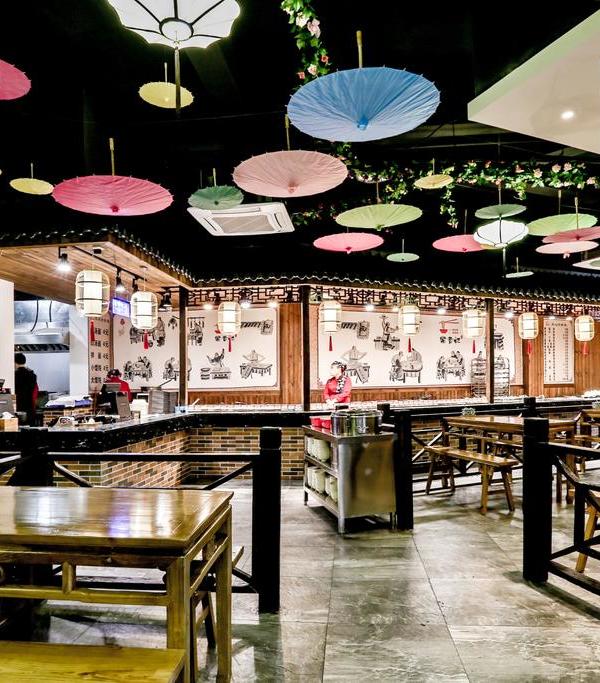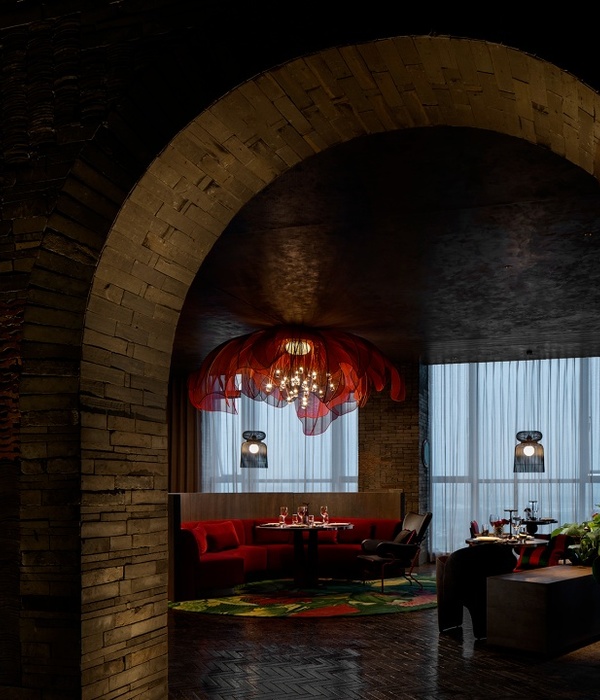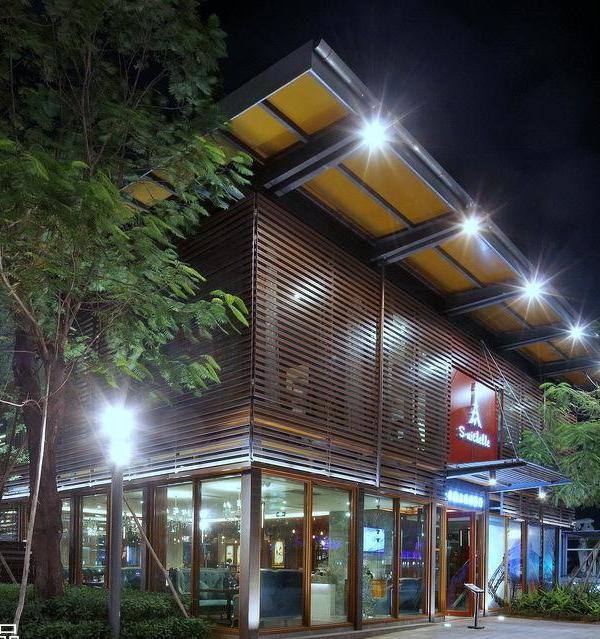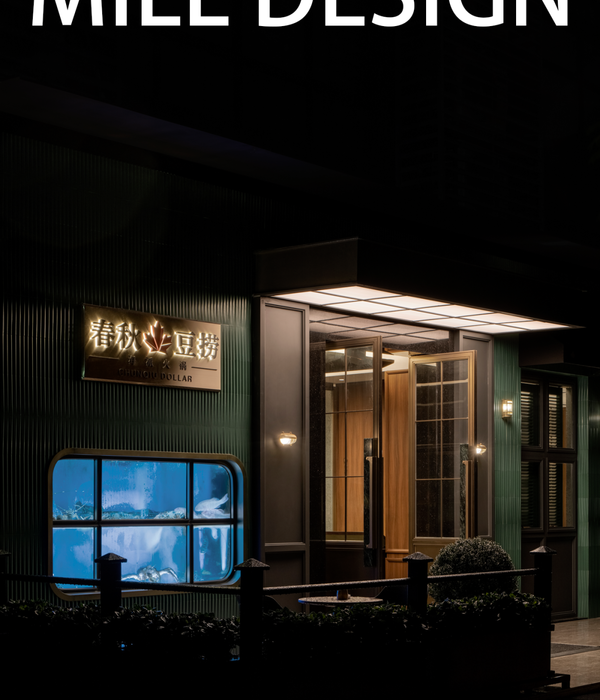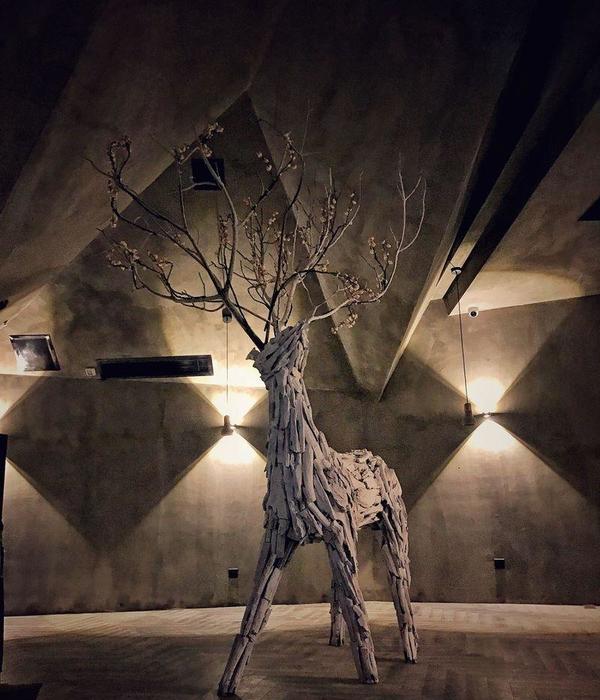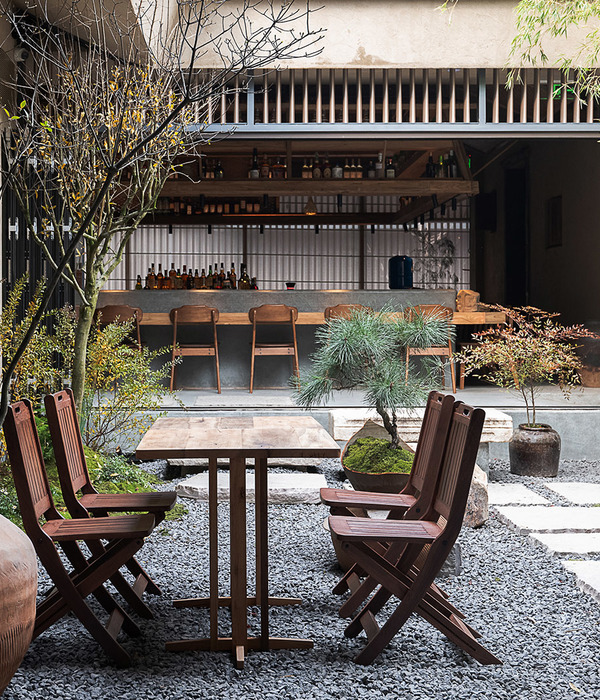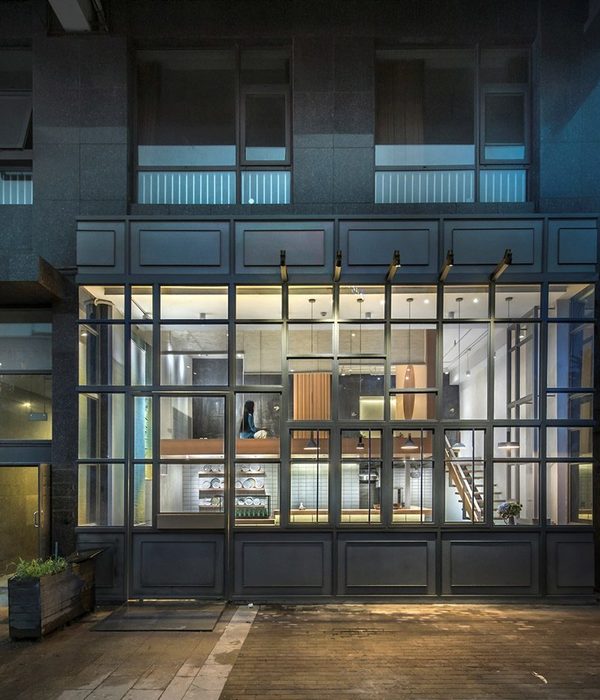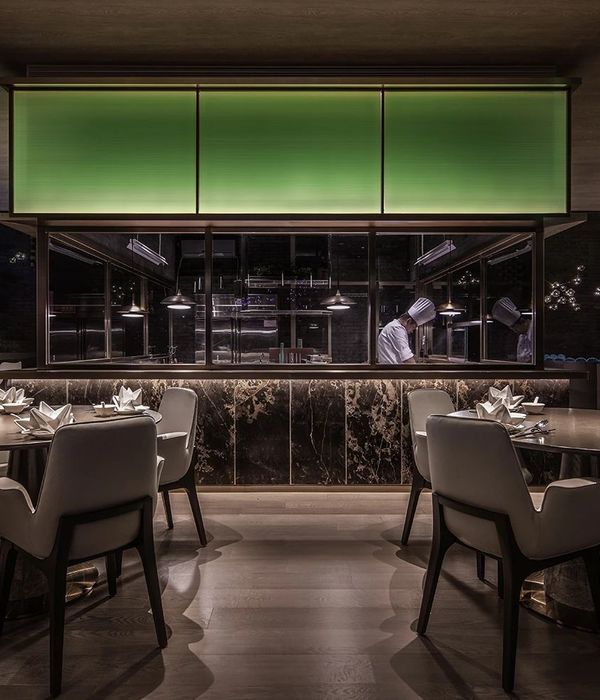在旅游业之外,巴塞罗内塔区域(Barceloneta)的当地居民们有着自己的生活文化。在这里,空气中充满着大海的气味;清晨的时候,渔民们会在一些充满了当地人记忆的餐厅里吃饭聊天。可以说,这些地方在城市中都有了一定的象征意义,并且可以让人们感受到真实的地中海文化、品尝到地道的地中海美食。因此,当设计团队接到委托要重新设计这些神话般的空间的时候便开始思考:作为设计者应该以什么样的方式介入?又如何在传统与现代之间创造出一种永恒的感觉?
Looking beyond the touristic craze, there is a local life present in the Barceloneta neighbourhood. The air smells like the sea, and early in the morning fishermen stock some of the restaurants that still speak to the memory of the local community. These places have become symbols in the city, offering an authentic experience of the Mediterranean gastronomic culture and cuisine. When asked to redesign these kind of mythical spaces, how should we intervene as designers? How do we create a sense of timelessness, in between tradition and contemporaneity?
▼餐厅外观, exterior view of the restaurant ©José Hevia
Cheriff餐厅是一个传统的家族企业,以其悠久的历史悠久和上乘的美食而著称。它是经典美食的代表,店内供应的鲜鱼都是从附近的码头采购的。
Cheriff餐厅是巴塞罗内塔地区城市记忆的一部分。它是街区的经典之作,因此要通过一种不受时间影响的设计方式,保留餐厅的年代感和真实性。为了达到这种永恒感,设计团队将餐厅内空间较为紧凑(通常情况下为鱼店)的部分保持原样,从而构建餐厅与当地社区之间的交流。而正如设计师Massimo Vignelli所描述的那样,永恒的事物一般都是在易于理解的情况下产生的。他曾经谈到过“知识的优雅性”,指出简单性并不代表“简单”,它是漫长试验、重新评估和完善过程的结果。
▼餐厅爆炸轴测图, the exploded axon of the restaurant ©MESURA
The Cheriff restaurant comes from a long tradition of local family businesses. It has turned into a culinary classic, known for its history and quality, with fresh fish coming in directly from the neighbouring docks.
Cheriff is part of Barceloneta’s memory. A classic in the neighbourhood, it needed an atemporal design that preserved the authenticity time bestowed onto the restaurant. As part of a strategy seeking timelessness, the distribution into compact areas (typical of the fish shop), was kept in tact in order to speak to the local community. As designer Massimo Vignelli described it, timelessness is created when things are easily understood. He spoke of “intellectual elegance”, as simplicity is by no means “simple”, but rather the result of a long process of experimentation, revaluation and refining.
▼从入口看餐厅室内, viewing the interior space of the restaurant from the entrance ©José Hevia
▼餐厅入口门厅及其吧台, the entrance hall and bar counter of the restaurant ©José Hevia
手工艺的加入使得设计变得更为人性化了,因为它会给空间带来额外的细节、优势和价值。手工艺起源于集体创造,因此它与特性和真实性息息相关。就像日本人所说的那样,手工艺中没有自我的概念。“人民的艺术”强调了独特、真实和注重细节的重要性。真实意味着真诚和负责。手工艺需要一定的知识和技巧,并对传统历史有相当的了解,这样才能将自身与质量联系起来。
在本项目,手工艺表现在Cheriff餐厅水磨石材料的重造上。这是一种经过数代手工艺大师的研究,后来传承下来的地面砖制造技术。这种水磨石是一种由大理石、石英、花岗岩和玻璃碎片组成的复合材料。一般情况下,人们会将其与水泥基粘合剂或其它聚合物、或是与这二者一起在现场浇筑成型,有多种颜色和图案。这些铺地材料与白色窗帘和桌布等柔软的纺织品元素一起营造出一种亲密的氛围。
▼材料制作过程,the process of making floor ©MESURA
▼地面成品,the finished floor ©MESURA
Including artisanry into design means making it human. Artisanry adds subtlety, strength, and value. It’s closely connected to identity and authenticity, as its origins are traceable to collective creativity. Like the Japanese said, there is no ego in artisanry. “The arts of the people” evokes notions of uniqueness, honesty and attention to detail. Being authentic is about being sincere and responsible. Craftsmanship draws on knowledge, skill and history, hence its connection to quality.
Artisanry is present in the reinvention of Cheriff’s terrazo, a technique to flooring passed through generations of forming artisan maestros. It’s a composite material consisting of chips of marble, quartz, granite and glass, and is poured in place with a cementitious binder, polymeric, or a combination of both, allowing for multiple colors, complex designs, and whimsical patterns to be constructed. Combined with the soft textile elements in white (curtains and tablecloths), an intimate atmosphere comes into being.
▼餐厅地面细节,floor details of the restaurant ©MESURA
新的 Cheriff餐厅是对原始餐厅空间的现代诠释。设计团队回收了原有空间中的木材和黄铜材料,并将它们重新打造为了木板和细木工。此外,团队还在原有空间加入了深蓝色的元素。这个色彩元素被覆在各种材质和表面纹理的材料上,在深浅上呈现出细微的变化,不仅达到了统一的视觉效果,又让人不禁想起大海。从形式上看,曲线元素和保留下来的拱门将餐厅分为了不同的区域。本项目不仅尊重并歌颂了当地渔民过去的生活,更展现出他们如今的生活面貌。
▼室内用餐空间,曲线元素将餐厅分为了不同的区域, interior dining area, the curves divide the different areas in the restaurant ©José Hevia
▼深蓝色调的用餐空间, the dining area in the dark blue ©MESURA
The new Cheriff is an interpretation of the original restaurant. The initial wood and brass materials are recycled into reddish wooden panels and carpentry, and call out the maritime universe. The design introduces thereon an additional dark blue, ephemeral and changing like the sea, in various materials and textures, while serving as a unifying element. Formally, the curves and preserved arches, would divide the different areas in the restaurant. An ode to the life of the local fishermen from the past, and those still bringing in the fish today.
▼餐厅座椅细节,采用木材和黄铜元素等,seating details with wood and brass ©MESURA
▼餐厅室内空间的曲线元素(左),黄铜细节(右),the curves in the interior space (left), brass material details (right) ©MESURA
▼吧台及餐厅灯具细节,the bar and lighting details ©MESURA
▼室内空间场景,interior scene ©MESURA
▼餐厅地面的图底关系, the figure ground diagram about the restaurant floor ©MESURA
▼平面图,floor plan ©MESURA
{{item.text_origin}}

